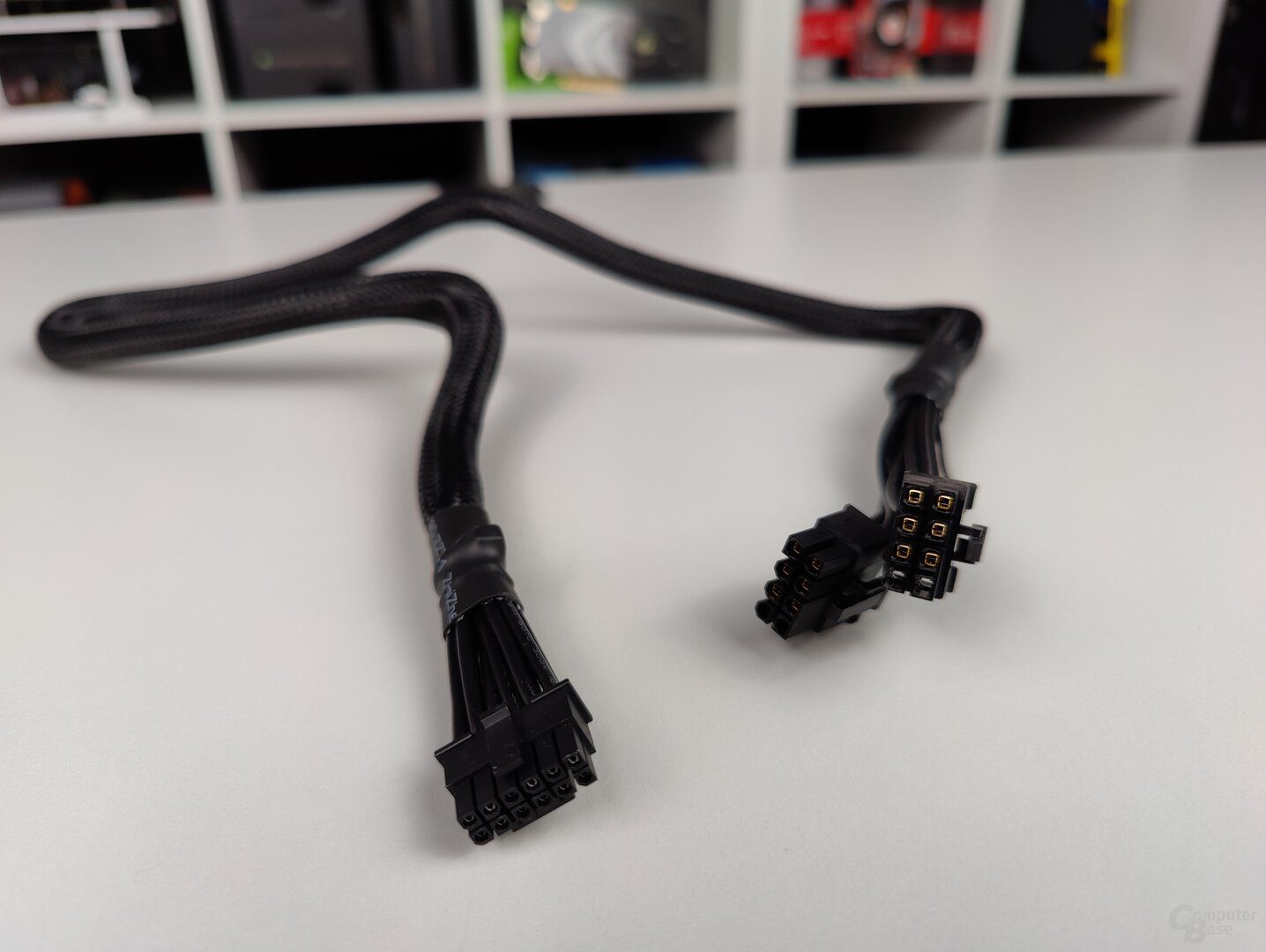
As part of its own Thermaltake Expo, the manufacturer is showing off some new power supplies. Special mention deserves the two high-end models of the Toughpower iRGB Plus series, which natively support the 16-pin 12VHPWR connector according to the ATX 3.0 specification. The GF3 series and the compact SFX also get the new connector.
Two high-end solutions for the next top GPU models
Toughpower iRGB Plus is a fully modular power supply unit in ATX form factor, which Thermaltake presents in a 1250W and 1650W variant. Both are particularly efficient according to 80Plus Titanium and have a 140mm Riing Duo RGB illuminated fan. The power supplies are fully digital and can be read using dedicated software.
The ATX 3.0 standard also comes with more stringent requirements for behavior during peak loads; for example, it is stipulated that a 1000 watt power supply must be able to provide a maximum of 2000 watts for periods of up to 100 μs. Thermaltake also advertises a hold time of more than 16 ms, a residual ripple of less than 30 mV, and the exclusive use of Japanese capacitors.
12VHPWR native and not just adapted
The 16-pin 12VHPWR connector, which the 1250-watt model offers once and the 1650-watt power supply even offers twice, was also adopted from the PCIe 5.0 standard and is a core element of the ATX 3.0 standard. Strictly speaking, this is a 12 (+4) pin connection, so current is conducted through 12 pins, with 6 × 12 volts and 6 × ground. In theory, 600 watts of electrical power can be provided through the plug.
The other four pins, which are slightly offset, are used for communication between the power supply and the graphics card. And since Thermaltake also offers the connection for the new models on the power supply side, such an exchange is really possible. It is different for example with the Seasonic Prime series which was released just a few days ago which only uses the 12VHPWR connector connection cable understood. The Asus Thor Titanium II also only offers the new connection via an adapter.
With such an adaptation, the 8 current-carrying wires of two or even three standard 8-pin connectors are translated to the 12 power-carrying pins of the 16-pin connection, but the four “sense” pins remain blind. The graphics card should be able to figure out how much power it can draw or how high the reserves of the connected power supply are; however, in the case of a patch cord, this information is missing. Instead, the graphics accelerator is tricked into thinking it has infinite performance reserves.
New plug promises safety and fewer cables
In the context of the new generations of AMD Radeon RX 7000 and Nvidia GeForce RTX 4000 GPUs, which will be released in the fall of this year, such communication makes sense, since the higher-end models in particular are supposed to consume even more energy, up to 600 watts for the RTX 4090 is the talk. But even at the beginning of the current generation of graphics cards, unusually high peak loads often caused problems only with supposedly powerful enough power supplies. The new standard is intended to protect against resulting shocks, emergency stop experiences, or even damage to electronics.
Another benefit is that most graphics cards can only be connected via cable thanks to the 16-pin connector. The RTX 3090 Ti Kingpin already shows how big the cable mess would be if 8-pin connectors were still used for the top models: Evga installed two 16-pin connectors for theoretically up to 1,200 watts, which in the case of an Adaptation via breakout Se must feed cable from 6 conventional 8-pin connectors.

12VHPWR also for conventional format and SFX
Aside from higher-end solutions, Thermaltake has also introduced the GF3 series, 80Plus Gold certified power supplies, models with a maximum power of 1,650, 1,350, 1,200, 1,000, 850 and 750 watts are available. In the case of the most powerful model, two 12VHPWR sockets are offered as with the iRGB Plus series, the smaller variants only offer the new connection once. The same goes for the SFX series power supplies, which offer 1,000, 850 and 700 watts according to 80Plus Gold in the smaller SFX form factor for which it is named.


